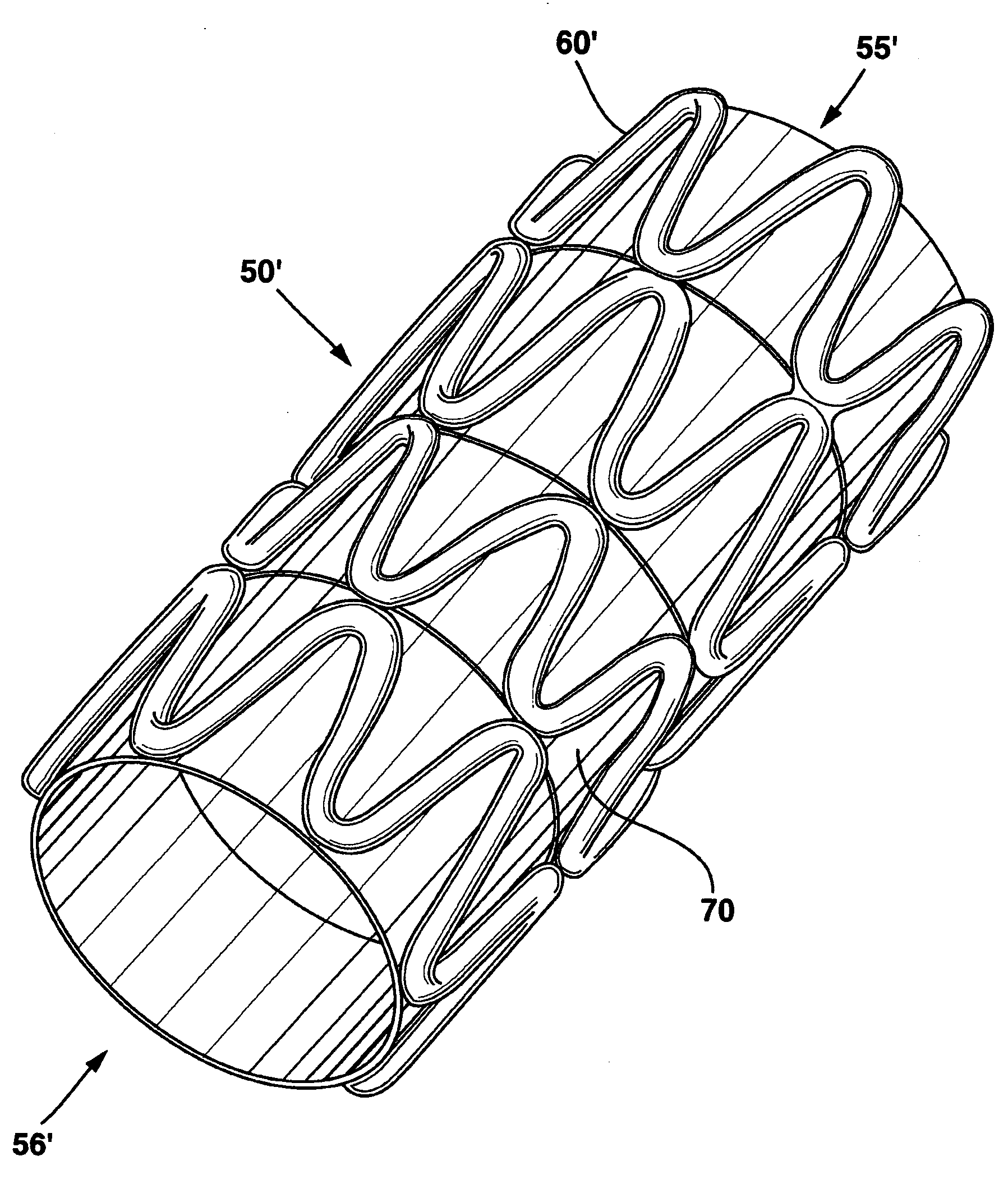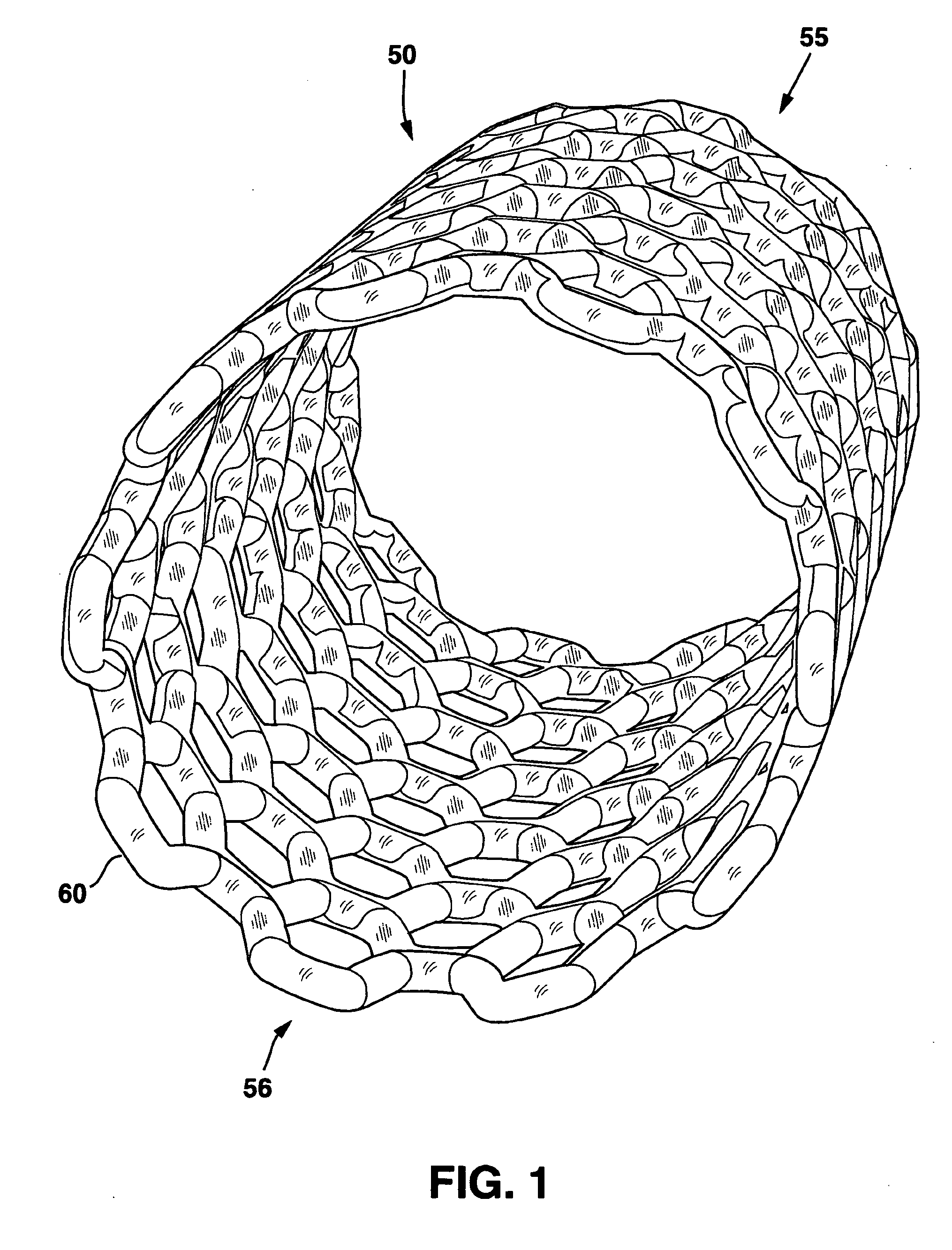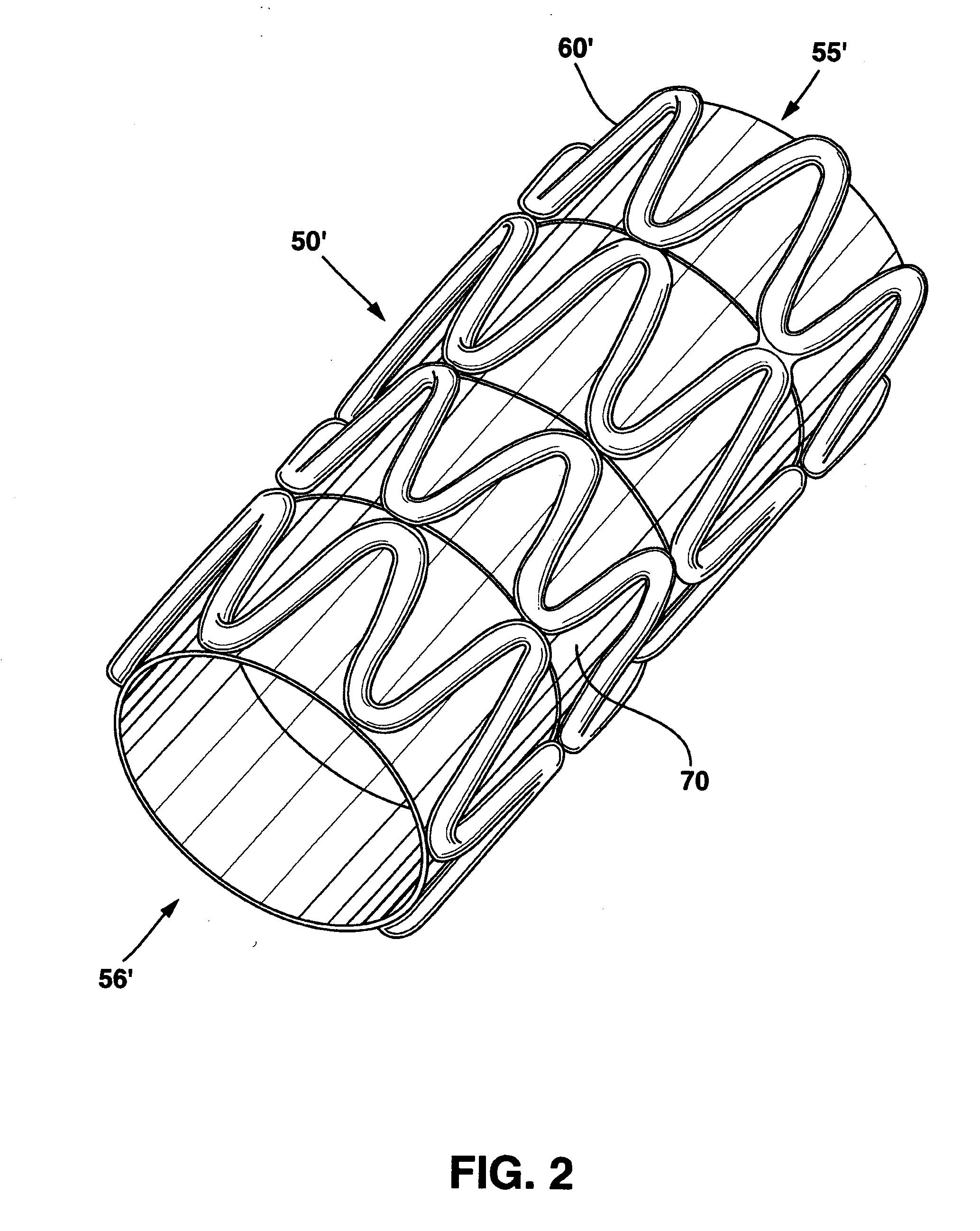Modulated stents and methods of making the stents
a technology of stents and stents, applied in the field of stents and methods of making stents, can solve the problems of affecting the mechanical property or integrity of the stent, affecting the quality of the stent, so as to improve the manufacturability and reduce the cost of the sten
- Summary
- Abstract
- Description
- Claims
- Application Information
AI Technical Summary
Benefits of technology
Problems solved by technology
Method used
Image
Examples
Embodiment Construction
[0052] Definitions
[0053] The term “biocompatible” or “biocompatibility” refers to the effects of materials on cells and tissues upon contact or implantation. Biocompatible materials are materials that cause no or minimal adverse effects on cells and tissues upon contact or implantation.
[0054] The term “biological agent” refers to drugs, medicines, cell replicates for medical or gene therapy at the implantation sites or otherwise chemical compounds (organic or inorganic) for property enhancement of the stents. The term “drug” is often used in place of “biological agent” in this application.
[0055] The term “elution” refers to the release process of the biological agents from the reservoirs of the stents to the tissue at or near the implantation sites during or after the implantation procedures. Elution of the biological agents is generally carried out by the body fluid.
[0056] The term “integrally coupled” refers to the formation or connection of two or more elements in an embodime...
PUM
| Property | Measurement | Unit |
|---|---|---|
| Temperature | aaaaa | aaaaa |
| Mechanical properties | aaaaa | aaaaa |
| Melting point | aaaaa | aaaaa |
Abstract
Description
Claims
Application Information
 Login to View More
Login to View More - R&D
- Intellectual Property
- Life Sciences
- Materials
- Tech Scout
- Unparalleled Data Quality
- Higher Quality Content
- 60% Fewer Hallucinations
Browse by: Latest US Patents, China's latest patents, Technical Efficacy Thesaurus, Application Domain, Technology Topic, Popular Technical Reports.
© 2025 PatSnap. All rights reserved.Legal|Privacy policy|Modern Slavery Act Transparency Statement|Sitemap|About US| Contact US: help@patsnap.com



